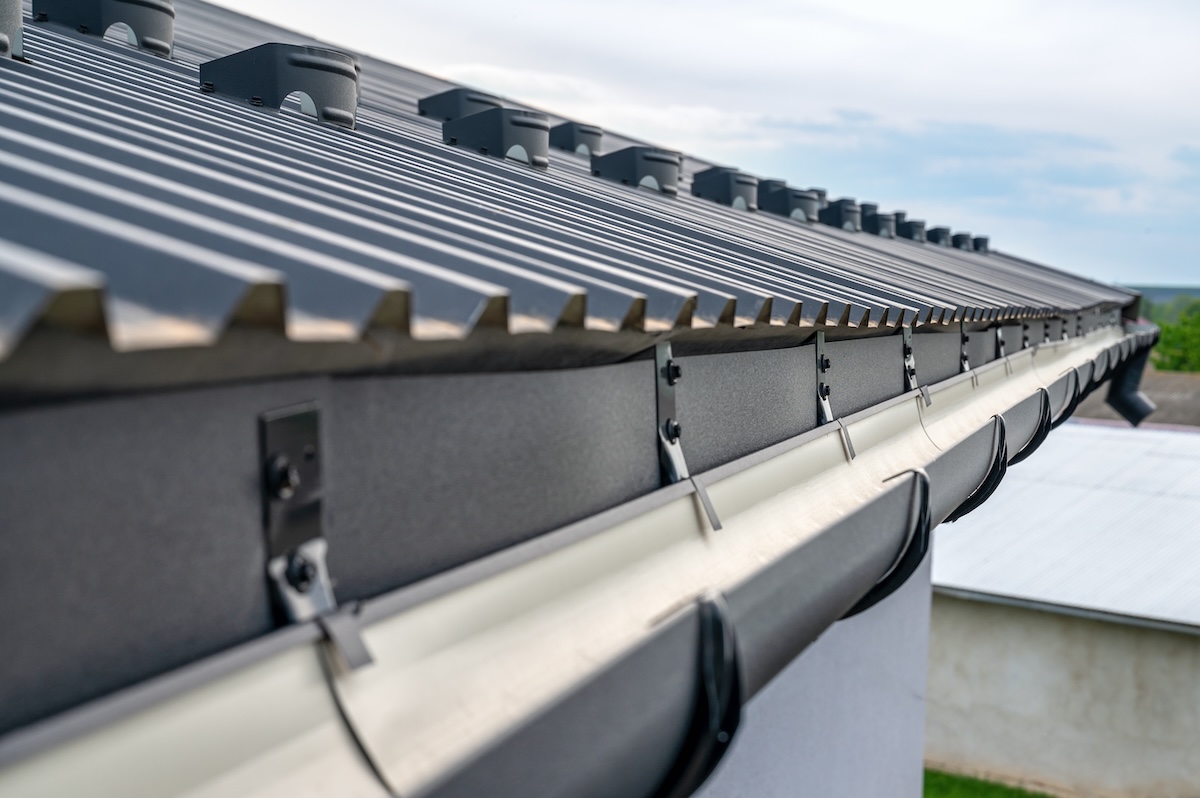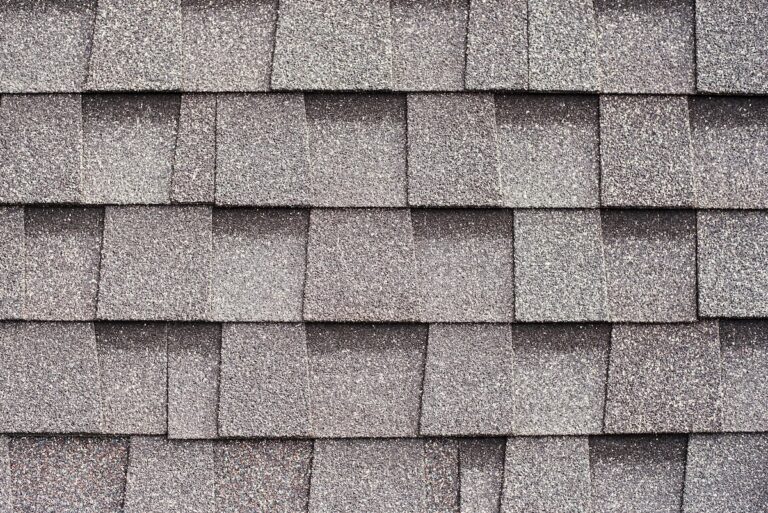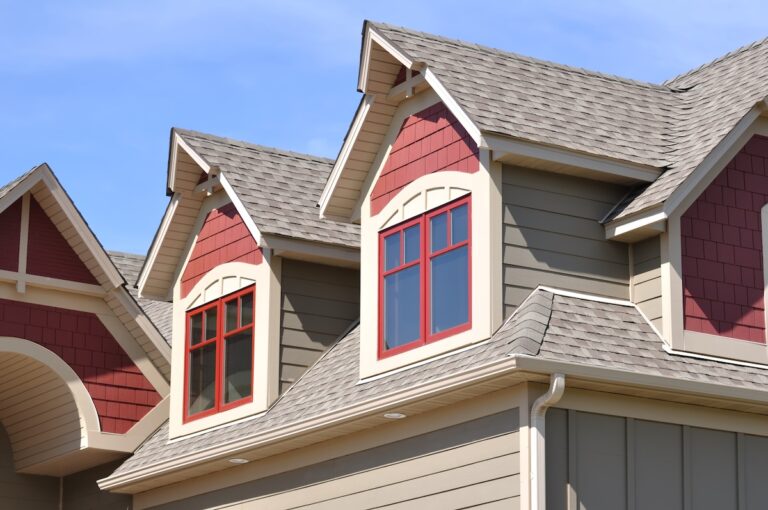Learning how to install gutters can help you protect your home or business from costly water damage. Properly installed gutters guide rainwater away from your roof, siding, and foundation, helping to extend the life of your property and prevent long-term issues.
Whether you’re a hands-on homeowner or simply want to understand the process before hiring a professional, this guide will break down everything you need to know:
- Tools and materials required for a gutter installation
- Step-by-step guidance on proper gutter placement
- Safety precautions and maintenance recommendations
By following these steps, you can feel confident that your gutter system will perform as expected through every season. If you are interested in this type of home improvement guide, you may also be interested in learning more about how to install ridge cap shingles.
🤔 Choosing the Right Gutter System
Before installation, it’s important to select the right type of gutters for your specific property. The materials, size, and shape of your gutters will determine how effectively they manage runoff.

Types of Gutter Materials
There are several gutter materials available to suit different budgets and preferences:
- Aluminum: Lightweight, rust-resistant, and affordable
- Copper: Premium durability with a distinctive look
- Vinyl: Cost-effective and easy to work with
- Steel: Strong but prone to rust if not properly coated
Each option has its pros and cons in terms of cost, durability, and aesthetic.
Gutter Sizes and Profiles
The standard sizes for residential gutters are 5-inch and 6-inch widths, with commercial buildings often requiring larger systems. The main shapes include:
- K-style gutters: Traditional appearance and high water capacity
- Half-round gutters: Smooth interior and vintage design appeal
- Box gutters: Often used in commercial applications for large-volume runoff
Be sure to match your gutter style to your roof’s slope and the average rainfall in your area. That’s why being guided by trained roofers to compare all the gutter specifications, like choosing the materials, is a great advantage.
🛠️ Tools and Materials You’ll Need
Having the right tools and hardware on hand will make your installation safer and more efficient.
Required Tools
Common tools include:
- Cordless drill with bits
- Tin snips or hacksaw
- Chalk line and measuring tape
- Ladder with stabilizers
- Level and square
Wearing work gloves and eye protection is strongly recommended.
Installation Materials
You’ll also need:
- Gutter sections and end caps
- Downspouts and elbows
- Hangers or brackets
- Screws or rivets
- Gutter sealant
- Splash blocks or drain extensions
Check that all components match the style and material of your chosen gutter system.
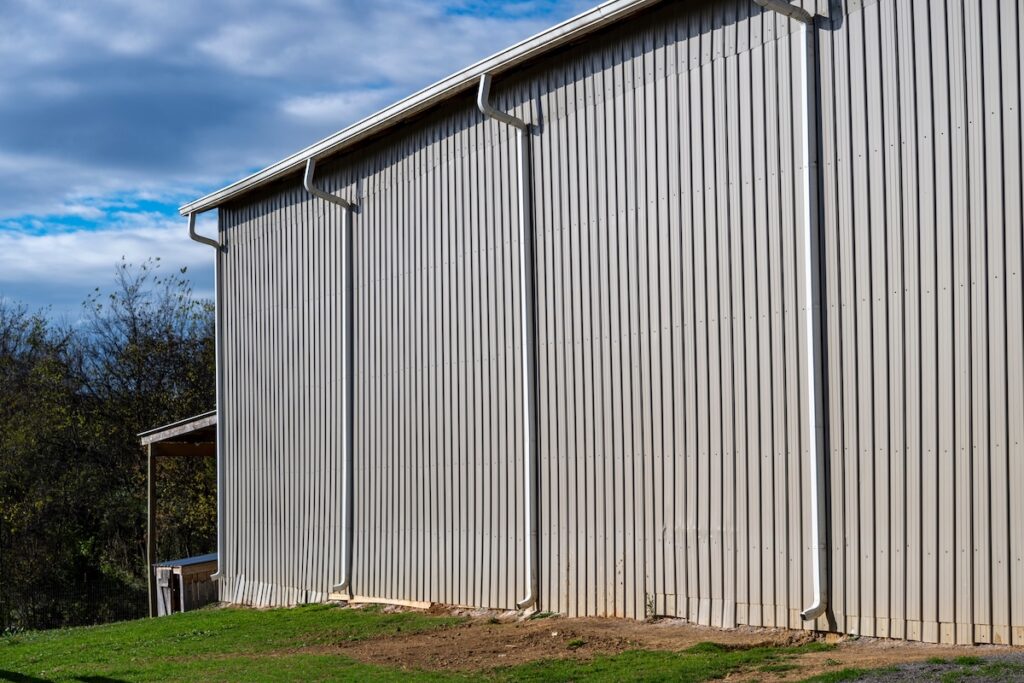
📐 How to Measure and Plan for Gutter Installation
Proper planning ensures that your gutters will perform effectively and look great once installed.
Measuring Roof Line Length
Start by measuring the entire length of the roofline where the gutter will be attached. Mark areas for:
- Gutter sections
- Downspouts
- End caps and corners
Use a chalk line to indicate where the top edge of the gutter will be installed.
Calculating Slope for Drainage
Gutters need a gentle slope to allow water to flow properly. Recommended slope is:
- ¼ inch of drop for every 10 feet of gutter run
Too little slope causes water to pool. Too much slope can look uneven or cause overflow.
✅ How to Install Gutters: A Step-by-Step Guide
The gathered knowledge over the years has turned our roofing company into a guide when it comes to helping people who wish to do the repairs by themselves. That’s why we have created these essential steps to ensure proper gutter installation from start to finish.
1. Install the Gutter Hangers
Start by attaching hangers or brackets:
- Space them every 2 feet for aluminum or steel gutters
- Make sure the hangers align with the chalk line slope
- Use corrosion-resistant screws for long-lasting performance
Check each bracket’s alignment with a level before securing.
2. Cut and Assemble Gutter Sections
Use tin snips to cut the gutter sections to the appropriate lengths:
- Dry-fit the pieces to ensure alignment
- Use connectors or sealant at joints
- Cap the ends using crimping tools or corner connectors
For large runs, assemble sections on the ground before attaching them to the fascia.
3. Mount the Gutters to the Fascia
Once hangers and gutter sections are ready:
- Lift each section onto the hangers
- Snap or screw them into place
- Re-check the slope visually and with a level
Secure each section before moving on to the next.
4. Attach the Downspouts
Downspouts direct water away from the base of your building:
- Use elbows to direct flow from gutter to wall
- Secure downspout straps every 5 to 6 feet
- Attach splash blocks at the base to prevent erosion
Install at least one downspout for every 40 feet of gutter length.
5. Seal All Joints
Use high-quality gutter sealant to protect your connections:
- Apply sealant to seams, corners, and end caps
- Let cure for 24 hours before running water through the system
- Check for leaks using a garden hose
Sealing is a critical step in preventing future issues.
❌ Common Mistakes to Avoid
Even small errors can affect the performance and lifespan of your gutter system.
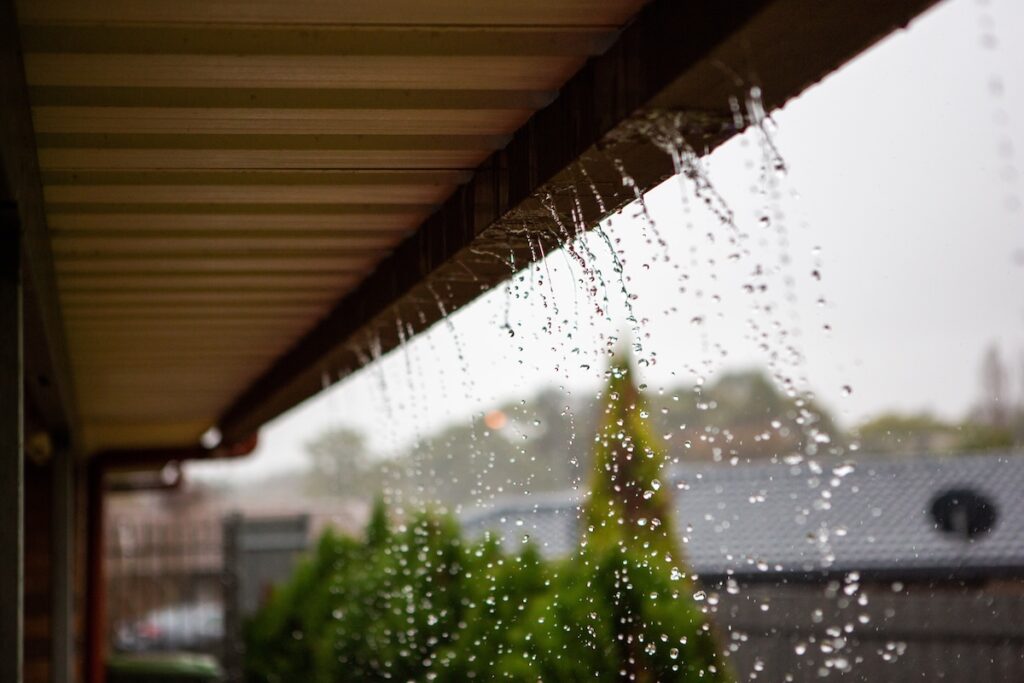
Poor Slope or Alignment
Gutters that are not sloped properly will:
- Collect standing water
- Sag over time
- Cause overflow during heavy rain
Measure carefully and double-check alignment at every stage.
Inadequate Support
Failing to use enough hangers or fasteners can lead to:
- Drooping gutters
- Water pooling in low spots
- Structural damage to fascia boards
Stick to the rule of spacing supports no more than every 2 feet.
Missing or Misplaced Downspouts
Downspouts that are too few or poorly placed result in:
- Water backing up in the gutters
- Erosion near foundations
- Basement water infiltration
Plan placement to manage runoff effectively across your property.
🧰 Maintenance Tips After Installation
Proper maintenance ensures your investment lasts for years to come.
Seasonal Gutter Cleaning
Gutters should be cleaned at least twice a year, typically in:
- Late spring after pollen and blossoms fall
- Late fall after leaves and twigs accumulate
Cleaning prevents clogs and keeps water flowing smoothly.
Installing Gutter Guards
To minimize maintenance, consider:
- Mesh or screen guards
- Surface tension covers
- Foam inserts
Gutter guards reduce debris buildup and improve performance.
Inspecting After Storms
High winds and heavy rain can shift or damage gutters. After a storm:
- Inspect for leaks or overflow
- Check fasteners and brackets
- Look for signs of sagging
Early detection of issues after storms prevents costly repairs.
🤝 Trust G. Cannon for Your Exterior Protection Needs
Learning how to install gutters is just the first step in protecting your home or business from water damage. From choosing the right materials to ensuring a proper slope and secure installation, each phase of the process plays a vital role in the success of your gutter system.
At G. Cannon, we specialize in providing homeowners with top-quality gutter and roofing services in Pennsylvania. Whether you’re looking for expert installation or long-term maintenance solutions, our team brings decades of experience, precision, and professionalism to every project.
Contact G. Cannon today! Let us help you protect your investment with a reliable, high-performance gutter system tailored to your property’s needs.
